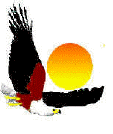
 Reg.
No. 98/18384/08 (a Section 21 Co. not for gain)
Reg.
No. 98/18384/08 (a Section 21 Co. not for gain)
"In
Custody of Our Natural Heritage" 
![]()
"Subject" links at bottom of page
"In
Custody of Our Natural Heritage" "Subject" links at bottom of page |
|
LARGE SPOTTED GENET AND KUDU
Large spotted genet These beautiful animals are nocturnal and can be found throughout Marloth Park. The photo was taken in Marloth Park. This, male, Large Spotted Genet, a orphan has been hand raised, after being found, abandoned, in old clothes. His human mother has done a great job in bringing him up, as close to the wild as possible and he is nearly ready for release back into the wild. Genets can weigh up to 2 kg and their diet include reptiles, insects, bats, spiders, birds, rodents, frogs etc, even fruit. Genet gestation period is approx. 10 weeks with 2-4 young being born. Their eyes open in 10 days and they live with the mother until about 7-8 months. Genets are solitary animals. Scent markings are done by way of middens and anal gland scent. In defense a small jet of foul smelling fluid is sprayed from the anal glands. This Genet has a very long tail and his coat was soft to the touch. The tail is important for the Genet as itís used as a rudder, to brake, balance and even serves as a prop when it stands on itís hind legs. Elongated foot pads, extending to the 1st joint of the legs give very good grip. All in all a fast and agile hunter and of course, another reason for protecting our precious wildlife!
KUDU Kuduís are ruminants. This means that they have four chambered stomachs and chew cud. Food is regurgitated and re-chewed, as part of the digestive process. Bacteria living in the herbivoreís digestive system transform indigestible plant cellulose in to digestible carbohydrates by process of fermentation. This takes place in the rumen, the 2nd and largest chamber. Kudu's have no upper incisors and in itís place they have a thick calloused pad. After a gestation period of seven months, cows give birth in isolation. The calf lies out for approx. two months, moving with the group at 3-4 months. At six months the calf is weaned and independent.
The Kuduís newborn is a hider and hides for the first two weeks. This strategy minimizes the chance that predators will find the young.
Scent markings of the Kudu, are on the hoof, or interdigital, glands as well as the preorbital glands. The secretions of the interdigital glands, exuding from the cleft between the hooves, leave a scent trace that helps kuduís to follow each other. Preorbital glands are used for the marking of various objects.
|
|
Wildlife 1 Wildlife 2 Wildlife 3 Predators Lion Photos Lion Ladies Birds Insects Snakes Images Riverview Lost? click here to go back to the NEF CONTENTS page Copyright © 2000 Ngwenya Eco FoundationWebmaster: e-mail: Charmane
Baleiza
Please
do not
copy any
photographs without permission! |